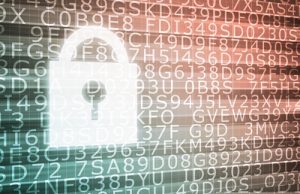President John Ebersole penned an article for the Huffington Post Education blog listing his ‘Top 10 Issues & Trends’ that will impact higher education in 2016.
In 2014, I wrote that the “currents of change have propelled the sector toward, or onto, one rock after another.” Two years later, higher education continues to evolve. The following includes the top issues and trends impacting higher education in 2016.
1. Presidential politics will keep higher education in the national spotlight this year. This won’t necessarily be a good thing for the sector as the focus will be on cost and affordability.
2. Higher Education Act (HEA) reauthorization has become the topic that refuses to go away. Now three years since its last “reauthorization,” the Act, with its great impact on higher education broadly appears more likely to pass thanks to Republican control of both houses of Congress.
3. Quality assurance will become an overarching concern of both state and federal regulators as the role of accreditors is forced more in the direction of regulatory compliance. What constitutes “quality” will be the subject of much debate.
4. Online education will resume its growth as back-at-work learners see continued need for credentials. While not returning to the double-digit levels fueled by proprietary school marketing, a solid 6 to 8 percent can be expected as the stigma of online study recedes.
5. Competency-Based Education (CBE) is no flash-in-the-pan and will regain momentum after the cold water delivered by the Department of Ed’s IG last fall (in its criticism of the Higher Learning Commission’s oversight of such programs). Clouds will remain, however, as institutions continue to wrestle with lack of a common vocabulary and standards.
To read the full article, please visit the Huffington Post Education blog.

The 60th Session of the Commission on the Status of Women will take place March 14 – 24 at the UN Headquarters and surrounding venues in New York City. This year, Laurie Nagelsmith, PhD, associate dean for the School of Health Sciences, will present at a parallel event with two of her colleagues on the board of directors of Sigma Theta Tau International (*STTI) Honor Society of Nursing and Excelsior College will be recognized as a supporter of the event. The title of the presentation is “Empowering Women through Leadership Development” and will focus on economic, political and social barriers existing in varying degrees worldwide that impact the ability of women and girls to reach their full potential and to achieve gender equity. Leadership development through collaboration, education, networking and mentoring are strategies that have potential to break cycles of inequity and internalized oppression by enhancing opportunities for quality education, decent work, and achieving acceptable levels of well-being. This presentation will discuss these strategies for leadership development, and provide examples and results that impact good health and well-being, quality education, gender equality and decent work and economic growth for women.
*STTI is a non-governmental organization with the Department of Public Health Information with Special Consultative Status with the Economic and Social Council in the areas of nursing and global health
Since the introduction of the Internet, users have faced cyberthreats of many different varieties. However, in the last decade, there has been a frontrunner in cyberattacks: buffer overflow attacks. Hackers discovered that programs could be easily accessed and manipulated through buffer overflow vulnerabilities, and these attacks became a common cyberthreat. To really understand the problem with buffer overflow attacks and their implications, you must first get a grasp of buffer overflow vulnerabilities.
What is a buffer overflow vulnerability?
Picture a temporary storage unit used to hold your extra stuff when you are moving. Your storage unit is only capable of holding so many things before it fills up and your personal items begin to tumble out and cause problems for everyone else in the storage facility. The same goes for buffers. They are designed to hold a small amount of data, and when they reach capacity, bits of the data being transferred may be forced out onto another buffer, which may corrupt the data that is currently in that buffer. The vulnerability exists when a program or process is not designed to sort data accordingly into buffers without creating overflow.

Why are buffer overflow vulnerabilities cyberthreats?
According to an article by the Oregon Graduate Institute of Science & Technology’s Department of Computer Science and Engineering, “buffer overflow vulnerabilities dominate in the area of remote network penetration vulnerabilities, where an anonymous Internet user seeks to gain partial or total control of a host.” According to Tech Target, hackers will often insert extra data encoded with specific instructions. This extra data floods the buffers, causing an overage and compromising the integrity of the original data. The implemented data has now infiltrated the majority of the buffers, giving the hacker the capability to access other files on the network, manipulate programming or delete important data. Many cyberexperts believe that buffer overflow attacks are so common because they are comparatively simple to carry out and difficult to trace.
Defenses against buffer overflow attack
Though program vulnerability sometimes slip by unnoticed until an attack is made, the following are several precursory defensive steps security programmers can take to prevent a buffer overflow attack.
-Pay close attention when writing code:
Computer code writers often get in a rhythm that can lead to mistakes. Take frequent breaks when writing code, especially when working with a C series program, to avoid making penetrable mistakes. It is always a good idea to check over your code several times and ask for an extra glance from another coder to correct preventable buffer overflow vulnerabilities.
-Program non-executable buffers:
This type of buffer prevents corrupted data from being able to perform its nefarious attacks. Some types of non-executable buffers may limit program compatibility, but there are many that will not interfere with universality and will still protect the program’s integrity. These include GCC Trampolines and signal delivery.
-Array bounds checking:
This form of range checking can sense variabilities in the system’s programming and processes. If an array bounds check detects an altered segment of data, it will stop the program completely, preventing the corrupted data from enacting its mal-intended processes.
You can learn more about the implications of buffer overflow attacks by tuning into the National Cybersecurity Institute’s webinar entitled, “Buffer Overflows – Wreaking Havoc with Stack Corruption.” Buffer overflows are just like old filing systems. When a container got too full, the contents would spill out. Though program vulnerability sometimes slip by unnoticed until an attack is made, there are several precursory defensive steps security programmers can take to prevent a buffer overflow attack.
Because buffer overflow attacks are so common, it is crucial that information security professionals are informed about them and how to defend their networks from the threat. Educational facilities like the National Cybersecurity Institute offer programs and degree courses that can train people to handle cyberthreats like these and many more.
Love our fascinating blogs? Join us on Facebook and Twitter!
Women account for over half the population, but according to CNBC News, only 20 percent of information technology degrees are earned by women. Some speculate that the reasoning for this is that women have traditionally been less interested in science and engineering based degrees, but whatever the cause may be, the landscape is quickly changing. The industry has realized the importance of diversity in creating a strong information security sector. To increase women’s interest in cybersecurity, companies and educational institutions could do the following:
1. Start professional initiatives for women
The professional development programs will focus on providing women with the skills and training they need to succeed in a cybersecurity career. The National Cybersecurity Institute was one of the first to introduce a program like this. Their Initiative for Women in Cybersecurity was launched to function as a primary resource on industry news and topics, as well as training and education programs for women interested in cybersecurity.
2. Create interest groups
The Internet and mobile apps have made it easier than ever for people to connect. Women can utilize these technologies to connect with other tech-inclined females in their area. One of the biggest components of the gender gap in the information security field is that women don’t have professional mentors to guide them through the workforce like their male counterparts do. By joining an interest group, women in information technology fields can support each other.

3. Establish scholarships
More educational institutions could offer scholarships to women interested in getting a degree in a computer science field. The financial assistance may inspire more women to pursue careers in information security, cybersecurity and information technology.
4. Host competitions
Cybersecurity companies might consider hosting cybersecurity competitions for teen girls and young college women. These events would generate a competitive interest in the field, pushing women to learn more about cybersecurity. Industry leaders could attend these events to find the next top cybersecurity professionals, so it would be mutually beneficial.
Cybersecurity and other computer science fields thrive on diverse perspectives, and women have the ability to provide those. By working toward a gender-equal future in fields like cybersecurity and data protection, companies may find that their information security is strengthened. To learn more about opportunities for women in cybersecurity, visit the National Cybersecurity Institute’s Initiative for Women in Cybersecurity page.

If you have just completed your first, next, or last(!) course through Excelsior, you may be anxious to know when your MAP will be updated. You know your grades….but when will your record reflect them? Below are some guidelines you can keep in mind prior to contacting your advising team!
As always, if you have questions after receiving your updated MAP, please be sure to contact your advisor for clarification!